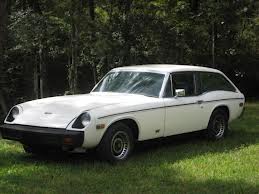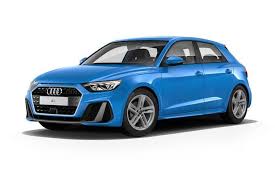


This edition of the Alfa-Romeo 156 2.5 V6 is the 6 speed / Manual version and was first brought out in 1997. This was at around the same time as the introduction of the 1997 TVR Speed 12 7.7L V12 and the 1997 McLaren F1 GT 6.1 V12.This particular Alfa-Romeo 156 has a 2492cc Naturally Aspirated Petrol powerplant with 6 cylinders in a V formation.
The 156 shares its Petrol V6 engine configuration with the likes of the 2014 Radical RXC 3.5 V6 Twin Turbo and the 2015 Radical RXC Turbo 500 3.5 V6. If you're looking for other fast cars which share the 156's Front Wheel Drive, Saloon combination then how about the 2022 Volkswagen-VW Golf R Performance 2.0 Turbo or the 2020 Toyota Avalon TRD 3.5 V6.
Weighing in at 1320 kgs (2910 lbs) this makes the Alfa-Romeo 156 2.5 V6 in the same weight category as the 2020 McLaren 765LT 4.0 V8 Twin Turbo or the give or take 50kg.
![Abarth 695 70th Anniversario 1.4 Turbo - [2020] image Abarth 695 70th Anniversario 1.4 Turbo - [2020] image](/editionimages/2071.jpg)
The Alfa-Romeo 156 shares the same bhp with the 2020 Abarth 695 70th Anniversario 1.4 Turbo (177 bhp)
In terms of power the 2492cc 24V V6 engine produces 192 bhp (143 kW) @ 6300 rpm similar to the 2020 Abarth 695 70th Anniversario 1.4 Turbo (177 bhp) or the 2020 Audi A1 Sportback 40 TFSI S tronic S line (197 bhp).
The Naturally Aspirated V6 throws out 161 lb-ft (218.2 Nm) @ 5000 rpm placing it with cars of similar torque performance figures such as the 2022 Mini Cooper Countryman John Cooper Works 1.5 Turbo (162 lb-ft) or the 2020 Audi A1 A1 Sportback 35 TFSI S tronic S line (184 lb-ft).
If one combines the weight with power or torque performance for the Alfa-Romeo 156 you can get a better idea of it's real world performance.
![Mercedes SL Class 500SL R129 - [1989] image Mercedes SL Class 500SL R129 - [1989] image](/editionimages/1206.jpg)
The 1989 Mercedes SL Class 500SL R129 (170.4 bhp per ton) has similar Bhp Per Ton stats as the Alfa-Romeo 156.
The Alfa-Romeo 156 has a Power to weight ratio of 145.4 bhp per ton and 121.9 lb-ft per ton. Bhp Per Ton figures of the 1997 156 competing with the 1989 Mercedes SL Class 500SL R129 (170.4 bhp per ton) or the 2003 Volvo S80 T6 3.0 Turbo (170.3 bhp per ton).
If you agree with the late great Carroll Shelby then arguably an even better indicator of potential performance, Torque. Use weight as well and you end up with - Torque per ton, with the Alfa-Romeo 156 generating around 121.9 lb-ft per ton. If you're curious as to what other cars have as much torque to weight then look no further than the 1987 Renault 5 GT Turbo (146.8 lb-ft per ton) or the 2000 Audi A4 3.0 V6 Quattro (146.8 lb-ft per ton).
With a 0-60mph time of 7.10 secs or a 0-100km/h (0-62mph) of 7.3 secs, this made the Alfa-Romeo 156 2.5 V6 as fast as the 2018 Abarth 595 Turismo 1.4 Turbo (7.10 secs) the 2013 Land-Rover Range Rover Sport 3.0 SDV6 (7.10 secs) the 2012 Lexus ES 350 (7.10 secs) the or the 2011 Abarth 500 Essessee 1.4 Turbo (7.10 secs). This Alfa-Romeo 156 2.5 V6 is also faster than the 2018 Abarth 695 XSR Yamaha Automated (7.20 secs) the 2015 Volkswagen-VW Golf GTD 2.0 TDI DSG (7.20 secs) the 2014 Peugeot 308 GT 1.6 Turbo (7.20 secs) the and the 2013 Volvo S60 T5 2.5 Turbo (7.20 secs).
When talking about the performance of the Alfa-Romeo 156 on the drag strip it can reach a quarter mile in an estimated 15.28 secs @ 89.5 mph. Similar performance down the quarter mile can be found with the the 2017 BMW 5 Series 54.d xDrive Touring G31 (15.22 secs), the 1992 Mazda RX7 Turbo (15.23 secs), and the 2015 Ford Focus ST-3 2.0 Turbo Estate (15.24 secs).
Modern performance cars are often artificially restricted to 155mph. The 1997 version of the Alfa-Romeo 156 2.5 V6 has a maximum speed of 143mph.
If maxing out your car on the AutoBahn is your thing and you're wondering what's faster than the 1997 Alfa-Romeo 156 2.5 V6 then how about the 2023 Porsche Cayenne Coupe 3.0 V6 Turbo (154 mph), the 2023 Porsche Cayenne 3.0 V6 Turbo (154 mph), or the 2019 Peugeot 508 PureTech 225 GT S and S (154 mph).










Vauxhall-Opel Zafira Tourer CDTi BiTurbo
Engine: Twin Turbo Diesel | 1956cc 16v St4
Top Speed: 135 mph
0-60mph: 8.80 seconds

Audi A1 Sportback 40 TFSI S tronic S line
Engine: Turbo Petrol | 1984cc 16v St4
Top Speed: 234.9 kph
0-100kph: 6.5 seconds



















